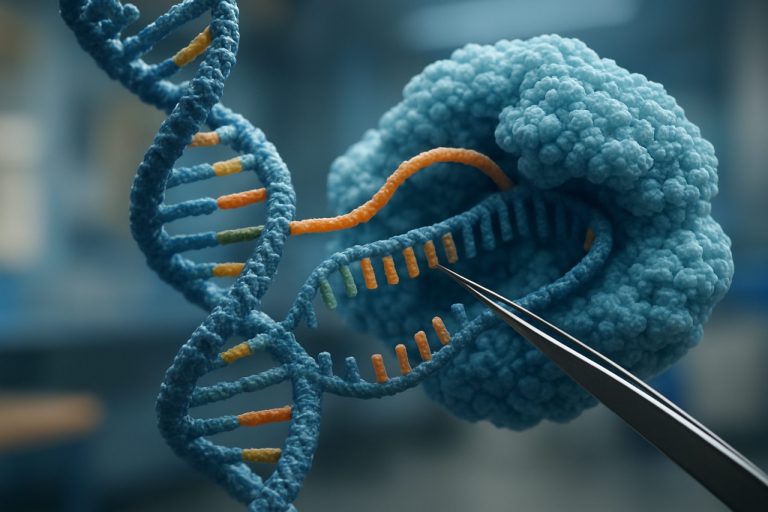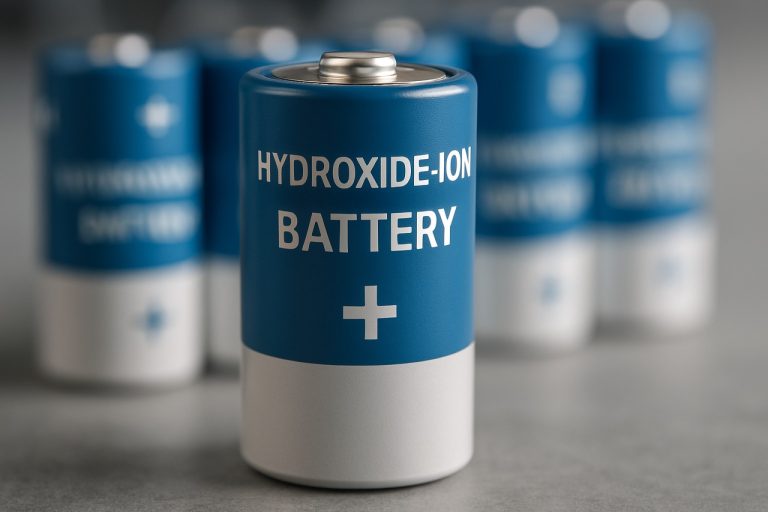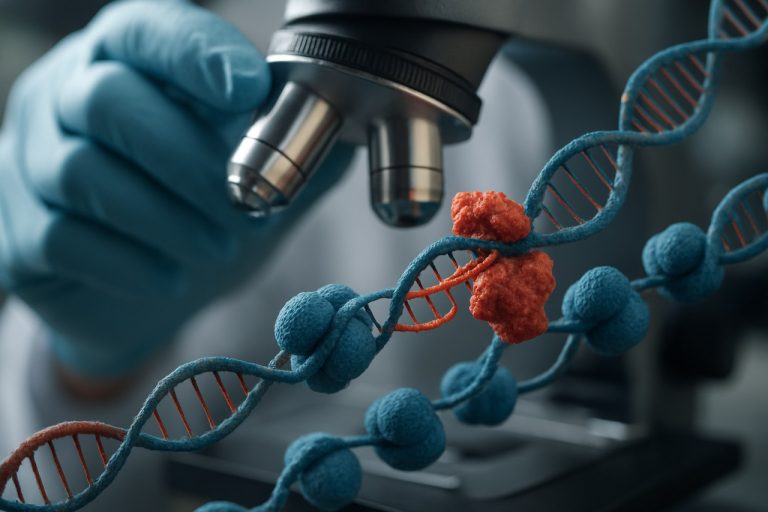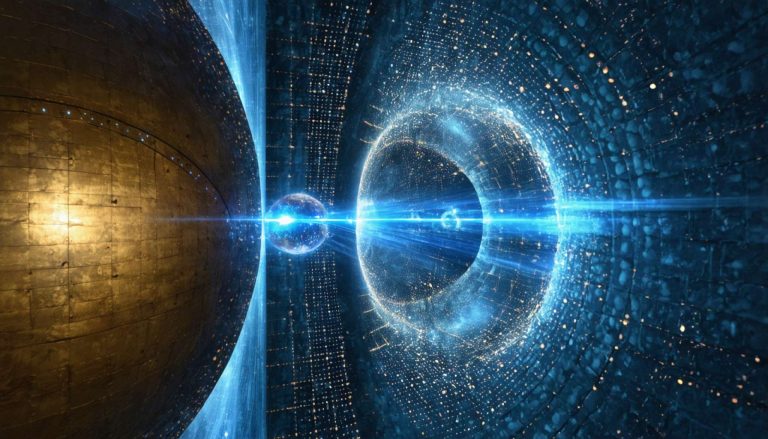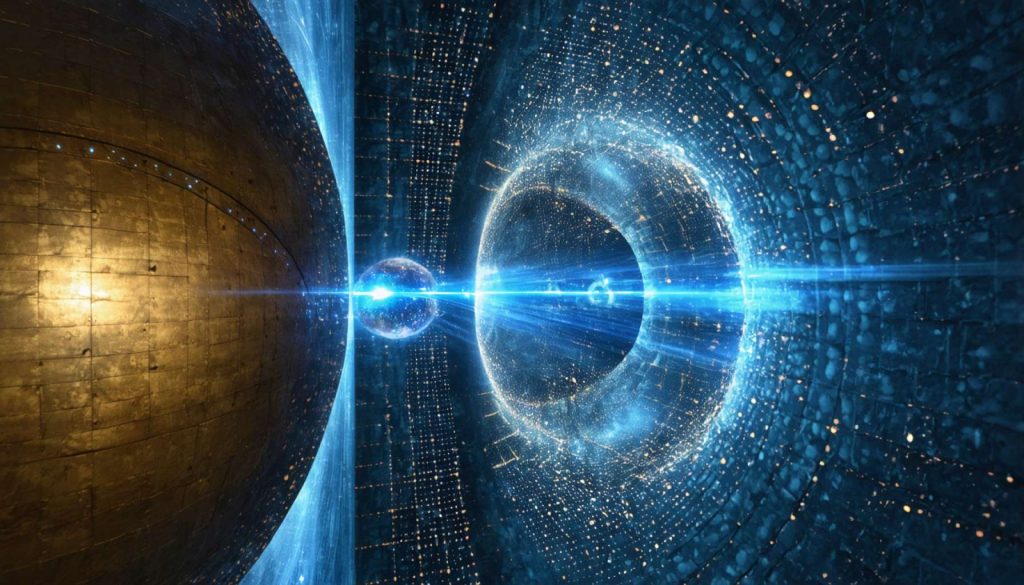
Unlocking the Invisible: How Antineutrino Detection Technologies Are Transforming Science and Security. Explore the Cutting-Edge Innovations Powering the Next Era of Particle Physics.
- Introduction to Antineutrinos and Their Significance
- Principles of Antineutrino Detection
- Historical Evolution of Detection Technologies
- Current State-of-the-Art Detectors
- Key Challenges in Antineutrino Detection
- Innovative Materials and Methods
- Applications in Nuclear Reactor Monitoring and Nonproliferation
- Role in Fundamental Physics Research
- Emerging Trends and Future Prospects
- Conclusion: The Road Ahead for Antineutrino Detection
- Sources & References
Introduction to Antineutrinos and Their Significance
Antineutrinos are elusive, electrically neutral subatomic particles produced in vast quantities during nuclear reactions, such as those occurring in the Sun, nuclear reactors, and during radioactive decay within the Earth. Their weak interaction with matter makes them exceptionally challenging to detect, yet this very property renders them invaluable probes for both fundamental physics and practical applications. The study of antineutrinos has deepened our understanding of neutrino oscillations, mass, and the asymmetry between matter and antimatter in the universe. Moreover, antineutrino detection technologies have emerged as powerful tools for nonproliferation monitoring, enabling remote surveillance of nuclear reactors and providing insights into the Earth’s interior through geoneutrino measurements.
The development of antineutrino detection technologies has been driven by the need to overcome the particle’s low interaction cross-section. Early breakthroughs, such as the pioneering work at the Savannah River Plant, relied on large volumes of liquid scintillator and inverse beta decay reactions to register rare antineutrino events. Since then, advances in detector materials, photodetection systems, and background suppression techniques have significantly improved sensitivity and resolution. Modern detectors, including those operated by India-based Neutrino Observatory and Kamioka Observatory, employ sophisticated designs to distinguish antineutrino signals from background noise, enabling precise measurements of flux, energy, and directionality.
As antineutrino detection technologies continue to evolve, they promise to play an increasingly central role in both scientific discovery and global security, offering unique insights into the workings of the universe and the activities of human civilization.
Principles of Antineutrino Detection
Antineutrino detection relies on observing the rare interactions between antineutrinos and matter, as these elusive particles interact only via the weak nuclear force and gravity. The most widely used principle is inverse beta decay (IBD), where an electron antineutrino interacts with a proton, producing a positron and a neutron. This process is exploited in liquid scintillator detectors, where the positron promptly annihilates with an electron, emitting gamma rays, while the neutron is captured after a short delay, producing a secondary gamma signal. The characteristic time and spatial coincidence of these signals provide a clear signature for antineutrino events, allowing for effective background discrimination International Atomic Energy Agency.
Other detection principles include elastic scattering on electrons, coherent elastic neutrino-nucleus scattering, and charged-current interactions on specific nuclei. Each method has unique advantages and challenges. For instance, elastic scattering offers directional information but suffers from low cross-sections, while coherent scattering allows for compact detectors but requires extremely low background environments and sensitive readout technologies Brookhaven National Laboratory.
The choice of detection principle is influenced by the antineutrino source, desired sensitivity, and operational constraints. Reactor monitoring, geoneutrino studies, and fundamental physics experiments may prioritize different aspects such as energy resolution, background rejection, or scalability. Advances in materials, photodetectors, and data analysis continue to refine these principles, enhancing the sensitivity and versatility of antineutrino detection technologies Lawrence Berkeley National Laboratory.
Historical Evolution of Detection Technologies
The historical evolution of antineutrino detection technologies reflects both advances in fundamental physics and the development of increasingly sophisticated instrumentation. The first successful detection of antineutrinos occurred in 1956, when Clyde Cowan and Frederick Reines used a liquid scintillator detector near a nuclear reactor, confirming the existence of the neutrino as postulated by Pauli and Fermi. Their experiment relied on the inverse beta decay process, where an antineutrino interacts with a proton to produce a positron and a neutron, both of which could be detected via scintillation and delayed coincidence techniques (The Nobel Prize).
Subsequent decades saw the refinement of these early methods. The 1970s and 1980s introduced large-scale water Cherenkov detectors, such as Kamiokande, which utilized the Cherenkov radiation emitted by charged particles moving faster than the speed of light in water. This approach enabled not only the detection of antineutrinos from reactors but also from astrophysical sources, such as supernovae (Institute for Cosmic Ray Research, University of Tokyo).
In recent years, the field has advanced with the deployment of segmented liquid scintillator detectors, solid-state detectors, and novel materials like gadolinium-doped water, which enhance neutron capture efficiency. These innovations have improved energy resolution, background rejection, and scalability, enabling applications in reactor monitoring, geoneutrino studies, and nonproliferation efforts (International Atomic Energy Agency). The historical trajectory of antineutrino detection thus illustrates a continuous interplay between theoretical insight and technological progress.
Current State-of-the-Art Detectors
State-of-the-art antineutrino detection technologies have advanced significantly in recent years, driven by both fundamental physics research and practical applications such as reactor monitoring and geoneutrino studies. The most widely used detection method remains the inverse beta decay (IBD) process, where an antineutrino interacts with a proton to produce a positron and a neutron. Large-scale liquid scintillator detectors, such as those employed by India-based Neutrino Observatory and T2K Experiment, utilize this technique, offering high sensitivity and relatively low background noise.
Recent innovations include the development of segmented detectors, such as the STEREO experiment and the SoLid experiment, which enhance spatial resolution and background discrimination. These detectors use composite materials, like plastic scintillators combined with neutron-sensitive layers, to improve event reconstruction and reduce systematic uncertainties. Additionally, water Cherenkov detectors, exemplified by Super-Kamiokande, have been upgraded with gadolinium doping to increase neutron capture efficiency, thereby boosting antineutrino detection rates.
On the frontier of compact and mobile detection, projects like Sandia National Laboratories’ antineutrino detector are developing portable systems for real-time reactor monitoring. These advances are complemented by ongoing research into novel detection media, such as liquid argon and advanced photodetectors, which promise further improvements in sensitivity and scalability. Collectively, these technologies represent the cutting edge of antineutrino detection, enabling both precision measurements and new applications in nonproliferation and earth sciences.
Key Challenges in Antineutrino Detection
Antineutrino detection technologies face several significant challenges that stem from the elusive nature of antineutrinos and the demanding requirements of their observation. One of the primary difficulties is the extremely low interaction cross-section of antineutrinos with matter, which means that vast detector volumes and long observation times are necessary to register a statistically meaningful number of events. This necessitates the construction of large-scale detectors, often located deep underground to shield them from cosmic ray backgrounds, as seen in facilities like SNOLAB and KEK.
Background noise presents another formidable obstacle. Natural radioactivity from surrounding materials, cosmic muons, and even the detector components themselves can mimic or obscure the faint signals produced by antineutrino interactions. Advanced background suppression techniques, such as the use of ultra-pure materials, active veto systems, and sophisticated event reconstruction algorithms, are essential to improve signal-to-noise ratios. For example, the KamLAND Collaboration employs a combination of liquid scintillator purity and shielding to minimize such backgrounds.
Additionally, the identification of antineutrino events often relies on the inverse beta decay process, which requires precise timing and spatial resolution to distinguish true events from random coincidences. The scalability and cost of detector materials, such as gadolinium-doped scintillators or large volumes of water Cherenkov detectors, also pose logistical and financial challenges. Overcoming these hurdles is critical for applications ranging from fundamental physics research to nuclear reactor monitoring and geoneutrino studies, as highlighted by organizations like the International Atomic Energy Agency (IAEA).
Innovative Materials and Methods
Recent advancements in antineutrino detection technologies have been driven by the development of innovative materials and novel detection methods, aiming to enhance sensitivity, background rejection, and scalability. Traditional detectors, such as those using liquid scintillators, have been augmented with new formulations incorporating gadolinium or lithium to improve neutron capture efficiency and timing resolution. Gadolinium-doped water Cherenkov detectors, for example, significantly increase the probability of capturing neutrons produced in inverse beta decay, a key signature of antineutrino interactions, thereby reducing background noise and improving event identification Super-Kamiokande Collaboration.
Solid-state detection methods are also emerging, utilizing materials such as doped plastic scintillators and novel semiconductors. These materials offer advantages in mechanical robustness, ease of deployment, and potential for miniaturization, which are critical for applications like reactor monitoring and nonproliferation efforts U.S. Department of Energy Office of Scientific and Technical Information. Additionally, the development of segmented detector arrays and advanced photodetectors, such as silicon photomultipliers (SiPMs), has enabled finer spatial and temporal resolution, further enhancing the discrimination between signal and background events.
Innovative methods, including the use of directionally sensitive detectors and hybrid detection schemes combining scintillation and Cherenkov light, are under active investigation. These approaches aim to provide not only improved detection efficiency but also directional information, which is valuable for source localization and background suppression Nature. Collectively, these innovations are expanding the capabilities and applications of antineutrino detection technologies.
Applications in Nuclear Reactor Monitoring and Nonproliferation
Antineutrino detection technologies have emerged as powerful tools for nuclear reactor monitoring and nonproliferation efforts. Since nuclear reactors emit vast numbers of antineutrinos as a byproduct of fission, these elusive particles provide a non-intrusive, real-time signature of reactor operations. By deploying antineutrino detectors near reactors, authorities can independently verify reactor power levels, fuel composition, and operational status, supporting international safeguards and transparency measures. This capability is particularly valuable for the International Atomic Energy Agency (IAEA) and other regulatory bodies tasked with ensuring compliance with nonproliferation treaties.
Recent advancements in detector design, such as segmented liquid scintillator arrays and solid-state technologies, have improved sensitivity and background rejection, enabling deployment in above-ground or near-surface environments. These improvements facilitate continuous, remote monitoring without interfering with reactor operations or requiring direct access to sensitive areas. For example, the Lawrence Livermore National Laboratory has demonstrated compact antineutrino detectors capable of monitoring reactor status from outside containment buildings, offering a practical solution for both declared and undeclared facilities.
Furthermore, antineutrino detection can help identify illicit diversion of nuclear material by detecting changes in the antineutrino flux and spectrum, which correlate with fuel burnup and plutonium production. This makes the technology a promising complement to traditional safeguards, enhancing the global community’s ability to detect and deter clandestine nuclear activities. Ongoing international collaborations, such as those coordinated by the U.S. Department of Energy Office of Scientific and Technical Information, continue to refine these technologies for broader deployment in support of nuclear security and nonproliferation objectives.
Role in Fundamental Physics Research
Antineutrino detection technologies play a pivotal role in advancing fundamental physics research by enabling the study of elusive neutrino properties and interactions. These technologies have been instrumental in confirming the phenomenon of neutrino oscillations, which provided the first evidence that neutrinos have mass—an insight that challenges the Standard Model of particle physics. Large-scale detectors, such as those employing liquid scintillator, water Cherenkov, or liquid argon time projection chamber techniques, have allowed physicists to observe antineutrinos from nuclear reactors, the atmosphere, and even astrophysical sources like supernovae. Such observations have deepened our understanding of neutrino mixing angles, mass hierarchy, and potential CP violation in the lepton sector, which could help explain the matter-antimatter asymmetry in the universe.
Moreover, antineutrino detection is crucial for probing rare processes such as neutrinoless double-beta decay, which, if observed, would indicate that neutrinos are Majorana particles and provide insights into the absolute neutrino mass scale. Experiments like KamLAND and T2K have utilized advanced detection technologies to achieve high sensitivity and low background noise, enabling precision measurements that test the limits of current theoretical models. The ongoing development of more sensitive and scalable antineutrino detectors continues to open new avenues for exploring fundamental questions in particle physics, cosmology, and beyond, reinforcing their indispensable role in the quest to unravel the universe’s deepest mysteries.
Emerging Trends and Future Prospects
Recent years have witnessed significant advancements in antineutrino detection technologies, driven by both fundamental physics research and practical applications such as reactor monitoring and geoneutrino studies. One emerging trend is the development of compact, mobile detectors utilizing solid-state scintillators and advanced photodetectors, which offer improved energy resolution and background discrimination. These innovations are enabling the deployment of antineutrino detectors in non-traditional environments, including above-ground and near-surface locations, broadening their utility for nuclear safeguard applications and remote reactor monitoring International Atomic Energy Agency.
Another promising direction is the integration of artificial intelligence and machine learning algorithms for real-time data analysis and event classification. These tools enhance the sensitivity of detectors by distinguishing genuine antineutrino signals from background noise, thus improving detection efficiency and reducing false positives Brookhaven National Laboratory. Additionally, research into novel detection media, such as water-based liquid scintillators and doped Cherenkov detectors, aims to combine the scalability of water Cherenkov technology with the energy resolution of scintillators, potentially enabling the construction of larger and more cost-effective detectors J-PARC Center.
Looking ahead, the field is poised for breakthroughs in both sensitivity and versatility. The deployment of large-scale, multi-purpose detectors—such as those planned for next-generation neutrino observatories—will not only advance our understanding of fundamental particle physics but also enhance capabilities for nonproliferation and environmental monitoring. Continued international collaboration and investment in R&D are expected to accelerate these trends, shaping the future landscape of antineutrino detection technologies.
Conclusion: The Road Ahead for Antineutrino Detection
The future of antineutrino detection technologies is poised for significant advancements, driven by both fundamental scientific inquiry and practical applications. As detection methods become more sensitive and scalable, the potential for breakthroughs in neutrino physics, such as the resolution of the neutrino mass hierarchy and the search for sterile neutrinos, grows ever closer. Emerging technologies, including large-scale liquid scintillator detectors, water-based Cherenkov detectors, and novel solid-state approaches, are being refined to enhance energy resolution, background rejection, and directional sensitivity. These improvements are crucial for both basic research and applied fields such as reactor monitoring and nonproliferation efforts, where real-time, remote detection of reactor antineutrinos could provide unprecedented transparency and security benefits International Atomic Energy Agency.
Collaboration across international scientific communities and investment in next-generation facilities, such as the Deep Underground Neutrino Experiment (DUNE) and the Jiangmen Underground Neutrino Observatory (JUNO), will be essential to realize these goals Deep Underground Neutrino Experiment Jiangmen Underground Neutrino Observatory. Furthermore, the integration of artificial intelligence and advanced data analysis techniques promises to accelerate discovery by improving signal extraction from complex backgrounds. As the field moves forward, addressing technical challenges—such as reducing detector costs, increasing deployment flexibility, and ensuring long-term operational stability—will be key. Ultimately, the road ahead for antineutrino detection is marked by interdisciplinary innovation and the promise of deeper insights into both the universe and the practical management of nuclear technology.
Sources & References
- India-based Neutrino Observatory
- International Atomic Energy Agency
- Brookhaven National Laboratory
- Lawrence Berkeley National Laboratory
- The Nobel Prize
- Institute for Cosmic Ray Research, University of Tokyo
- T2K Experiment
- Super-Kamiokande
- Sandia National Laboratories’ antineutrino detector
- SNOLAB
- KEK
- U.S. Department of Energy Office of Scientific and Technical Information
- Nature
- Lawrence Livermore National Laboratory
- Deep Underground Neutrino Experiment
- Jiangmen Underground Neutrino Observatory
